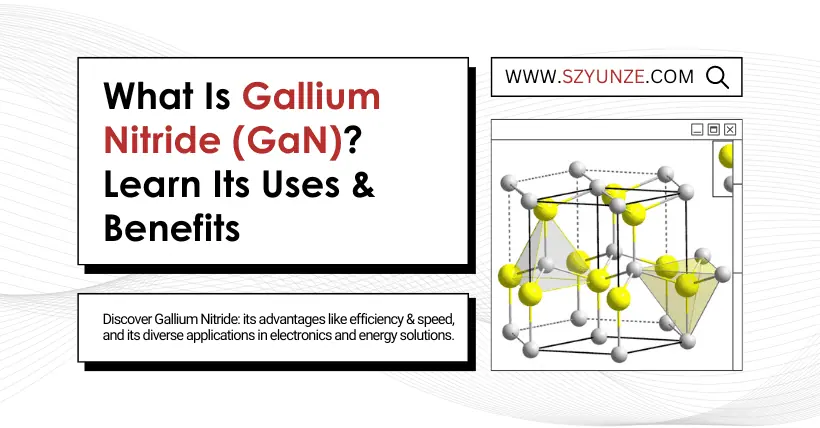1. Introduction
Many years ago, for most digital enthusiasts, phone chargers were unremarkable accessories with little technological content.
However, in recent years, technological advancements have been rapid. Like the sudden bloom of pear blossoms overnight, gallium nitride (GaN) chargers have gradually become mainstream. Charging speeds have increased, user experience has improved, and prices have risen. As a result, chargers have transformed into high-tech products.
This article briefly introduces what gallium nitride is and what GaN chargers are.
2. What is Gallium Nitride?
Gallium nitride, abbreviated as GaN, is a compound semiconductor material composed of gallium and nitrogen. Its crystal structure primarily consists of wurtzite and zinc blende structures. Gallium and nitrogen atoms are connected in a tetrahedral arrangement, and this unique structure imparts GaN with several distinctive physical properties.
3. Advantages of Gallium Nitride
The primary advantage of GaN lies in its wide bandgap, approximately 3.4 eV. This characteristic enables GaN materials to perform exceptionally well in applications requiring high power, high temperatures, and high frequencies.
Compared to traditional semiconductor materials like silicon, GaN has a wider bandgap and higher electron mobility. This allows electrons to move more quickly within the material, enabling GaN-based electronic devices to achieve higher switching speeds and lower on-resistance.
4. GaN Chargers
The working principle of a GaN charger is straightforward. AC power is first converted to DC through a rectifier circuit, and then power conversion is performed using GaN power transistors. The high switching speed and low on-resistance of GaN power transistors allow chargers to operate at high frequencies, reducing the size of magnetic components such as transformers and inductors.
For example, traditional silicon-based chargers typically operate at frequencies ranging from tens of kHz to hundreds of kHz, while GaN chargers can reach MHz-level frequencies. This high-frequency operation allows the use of smaller inductors and capacitors, significantly reducing the charger’s size.
Additionally, thanks to the advantages of GaN materials, GaN chargers experience less energy loss during power conversion and generate less heat. This means that GaN chargers offer faster charging speeds, longer lifespans, and better energy efficiency, making them more environmentally friendly.
5. Other Applications
It is worth emphasizing that this article primarily targets “ordinary” digital technology enthusiasts and thus focuses on GaN chargers.
However, the applications of GaN extend far beyond this. In addition to consumer-grade products, GaN has many uses in commercial and industrial fields. Below are two examples:
- GaN Power Transistors
GaN can be used to manufacture power transistors with higher breakdown voltages and lower on-resistance. For the same breakdown voltage requirements, GaN power transistors can be much smaller than silicon-based ones. In high-power applications like server power supplies and EV charging stations, the advantages of GaN power transistors are even more pronounced. - GaN RF Devices
Due to their high electron mobility and wide bandgap properties, GaN RF devices can operate at high frequencies and deliver high output power. For instance, in 5G communication base stations, GaN RF power amplifiers provide higher gain and efficiency.
6. Conclusion
In summary, gallium nitride is a high-performance semiconductor material with exceptional properties. It demonstrates significant advantages and broad application prospects in electronics, particularly chargers. With continued technological advancements, GaN is expected to find more and increasingly vital applications in the future.
Related:

Disclaimer:
- This channel does not make any representations or warranties regarding the availability, accuracy, timeliness, effectiveness, or completeness of any information posted. It hereby disclaims any liability or consequences arising from the use of the information.
- This channel is non-commercial and non-profit. The re-posted content does not signify endorsement of its views or responsibility for its authenticity. It does not intend to constitute any other guidance. This channel is not liable for any inaccuracies or errors in the re-posted or published information, directly or indirectly.
- Some data, materials, text, images, etc., used in this channel are sourced from the internet, and all reposts are duly credited to their sources. If you discover any work that infringes on your intellectual property rights or personal legal interests, please contact us, and we will promptly modify or remove it.



